09 Oct On This Day in UB History: October 9 (Bishop Markwood)
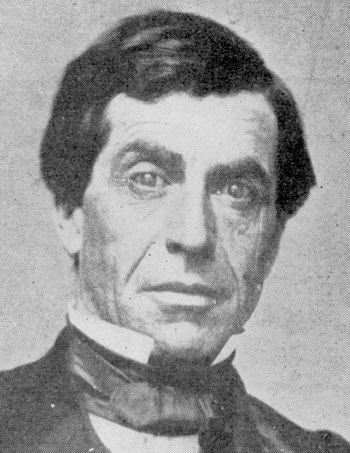
Bishop Jacob Markwood
Jacob Markwood, age 16, was converted on October 9, 1832, during a revival meeting (probably Methodist). He struggled with the decision for three days, and finally found what he described as “inexpressible peace in Christ.”
Markwood and his twin brother, Conrad, were the youngest of eight children. They grew in Virginia, mostly poor, but they all turned out well. Jacob attended school, and proved to be very bright and intellectually curious. Books were his constant companion. Even while working at the loom in the woolen factory owned by his older brothers, a book was always nearby.
He became a United Brethren member in 1836, was licensed to preach a year later, and in 1838 joined Virginia Annual Conference. He remained a pastor in Virginia for nearly 25 years. Historian John Lawrence wrote, “He is never happier than when in his saddle climbing over the hills and mountains on the way to a quarterly meeting.”
Markwood was elected bishop in 1861, a month after the start of the Civil War. Though a Virginian, born and raised, he stood solidly behind the Union. Someone–a UB church member, it was suspected–reported him to Confederate officials, and he fled north with a $1000 bounty for his arrest. His responsibilities during the war years included overseeing far-flung UB work in Minnesota, Wisconsin, and other points West.
Markwood was fairly short, thin, and wiry, and was full of nervous energy. He was also known to be hotheaded and fearless, pouring down on people with what A. W. Drury described as “fiery eloquence, scathing denunciation, and relentless logic.” He never wrote out his sermons, and used only basic notes, if any. He preferred to study thoroughly, and then preach extemporaneously from what he had learned.
During one campmeeting, when some folks came onto the grounds to sell liquor, trinkets, and other items, he took a hatchet to their stands. Another time, when someone interrupted him while he was preaching, he scowled, “Sit down, you tadpole of hell!”
But he was also known to be very generous, giving away his last cent, and even his clothes, to needy preachers and the poor. Several times, he distributed to poor people all the money collected for his own support, and then borrowed money to continue his journey to wherever he was going next. Biographer Henry Adams Thomps that as a traveling pastor, “It was his custom to alway remember the servants at homes where he stopped over night.” This being Virginia, the “servants” were probably slaves.
Markwood served eight years as bishop, but experienced considerable pain during that second term. People said he was constantly on the go, and just wore himself out. He and his wife Arbeline, married in 1837, never had children. Bishop Markwood died on January 22, 1873, at the home of his father-in-law in Luray, Va. He was just 57 years old. Arbeline died in 1886.

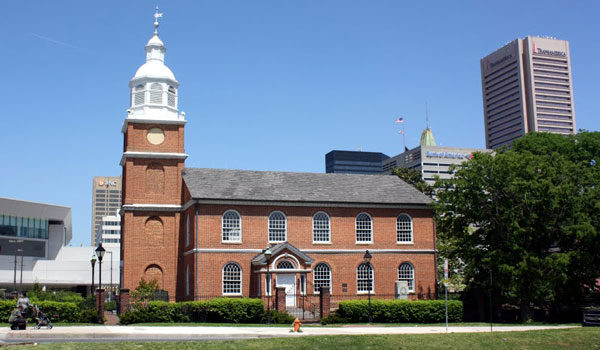
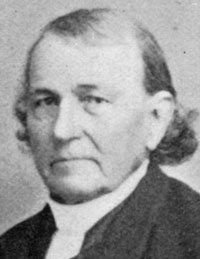
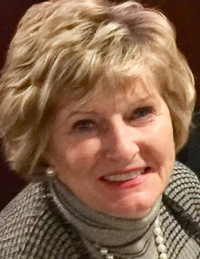 On October 4, 2013, Dr. Sherilyn Emberton was inaugurated as president of Huntington University. She was the first woman president in the school’s history. The installation was conducted by Ms. Kelly Savage, chairperson of the HU Board of Trustees since 2010–the first woman to chair the board.
On October 4, 2013, Dr. Sherilyn Emberton was inaugurated as president of Huntington University. She was the first woman president in the school’s history. The installation was conducted by Ms. Kelly Savage, chairperson of the HU Board of Trustees since 2010–the first woman to chair the board.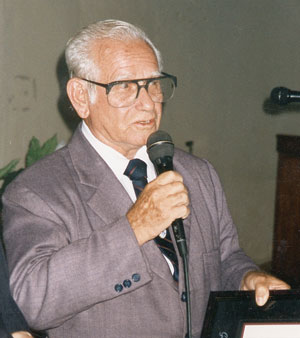 Archie Cameron (right), a missionary pioneer with the United Brethren church, passed away on September 29, 2005. He was He was 87 years old. His death occurred at the hospital in La Ceiba, Honduras. Archie had lived in Honduras since 1952, and had led the work there up through 1985.
Archie Cameron (right), a missionary pioneer with the United Brethren church, passed away on September 29, 2005. He was He was 87 years old. His death occurred at the hospital in La Ceiba, Honduras. Archie had lived in Honduras since 1952, and had led the work there up through 1985.
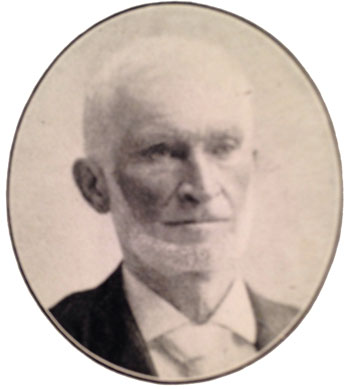
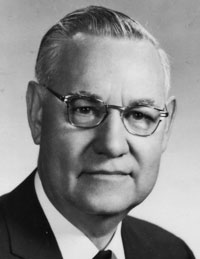 Clyde W. Meadows (right) served simultaneously as a United Brethren bishop and as president of the World’s Christian Endeavor Union. The latter role took him to Europe in September 1963. At a rally in Hamburg, Germany, he told the 1000 attendees that he would be traveling on to Sierra Leone. They insisted on taking an offering to send with him. It came to 300 German Marks.
Clyde W. Meadows (right) served simultaneously as a United Brethren bishop and as president of the World’s Christian Endeavor Union. The latter role took him to Europe in September 1963. At a rally in Hamburg, Germany, he told the 1000 attendees that he would be traveling on to Sierra Leone. They insisted on taking an offering to send with him. It came to 300 German Marks.